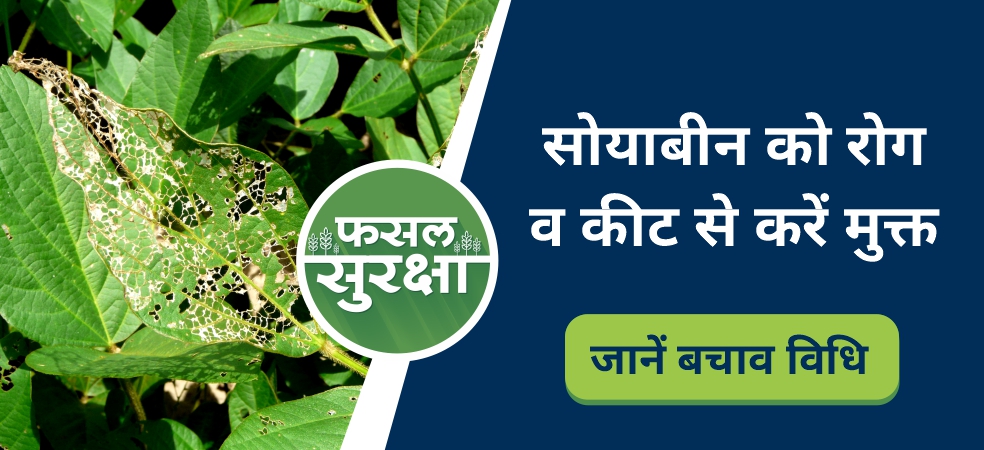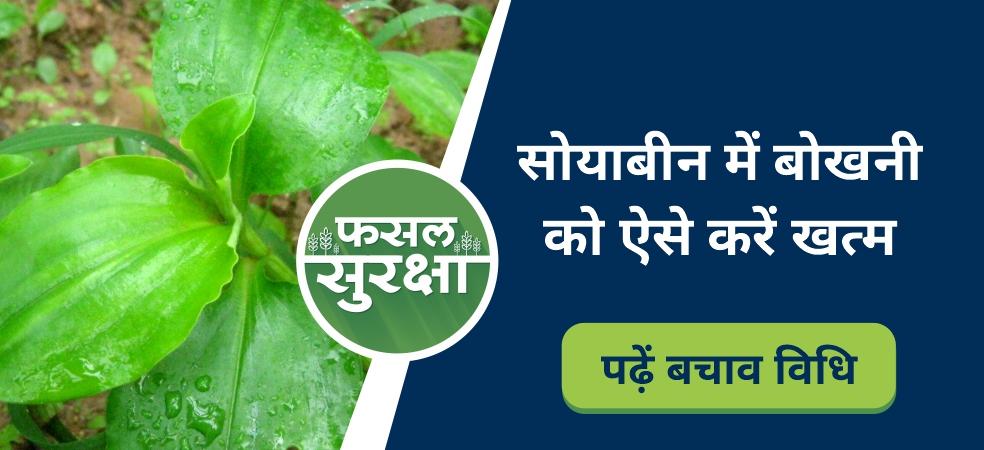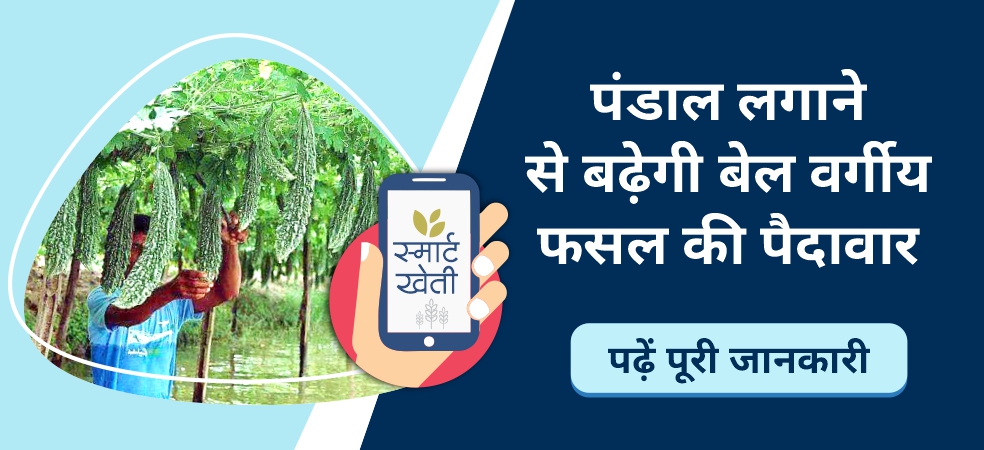What are the Prices of Fruits and Crops in different cities of the country? |
|||
City |
Commodity |
Min Price (In Kg) |
Max Price (In Kg) |
Lucknow |
Onion |
10 |
11 |
Lucknow |
Onion |
12 |
13 |
Lucknow |
Onion |
14 |
– |
Lucknow |
Onion |
15 |
16 |
Lucknow |
Onion |
10 |
– |
Lucknow |
Onion |
12 |
– |
Lucknow |
Onion |
15 |
– |
Lucknow |
Onion |
17 |
– |
Lucknow |
Garlic |
25 |
– |
Lucknow |
Garlic |
30 |
– |
Lucknow |
Garlic |
30 |
38 |
Lucknow |
Garlic |
45 |
50 |
Lucknow |
Potato |
20 |
– |
Lucknow |
Mango |
30 |
– |
Lucknow |
Pineapple |
20 |
25 |
Lucknow |
Coconut Green |
46 |
50 |
Lucknow |
Mosambi |
32 |
36 |
Lucknow |
Capsicum |
50 |
60 |
Lucknow |
Green Chilli |
40 |
45 |
Lucknow |
Lemon |
40 |
45 |
Guwahati |
Onion |
14 |
– |
Guwahati |
Onion |
16 |
– |
Guwahati |
Onion |
18 |
– |
Guwahati |
Onion |
19 |
– |
Guwahati |
Onion |
13 |
– |
Guwahati |
Onion |
17 |
– |
Guwahati |
Onion |
18 |
– |
Guwahati |
Onion |
19 |
– |
Guwahati |
Onion |
15 |
– |
Guwahati |
Onion |
20 |
– |
Guwahati |
Onion |
21 |
– |
Guwahati |
Onion |
22 |
– |
Guwahati |
Garlic |
22 |
27 |
Guwahati |
Garlic |
28 |
35 |
Guwahati |
Garlic |
35 |
40 |
Guwahati |
Garlic |
40 |
42 |
Guwahati |
Garlic |
23 |
26 |
Guwahati |
Garlic |
27 |
35 |
Guwahati |
Garlic |
35 |
40 |
Guwahati |
Garlic |
40 |
42 |
Shajapur |
Onion |
3 |
4 |
Shajapur |
Onion |
5 |
7 |
Shajapur |
Onion |
9 |
13 |
Shajapur |
Onion |
15 |
– |
Jaipur |
Onion |
13 |
14 |
Jaipur |
Onion |
16 |
– |
Jaipur |
Onion |
19 |
20 |
Jaipur |
Onion |
5 |
6 |
Jaipur |
Onion |
8 |
– |
Jaipur |
Onion |
9 |
– |
Jaipur |
Onion |
12 |
– |
Jaipur |
Garlic |
8 |
10 |
Jaipur |
Garlic |
15 |
18 |
Jaipur |
Garlic |
22 |
25 |
Jaipur |
Garlic |
30 |
35 |
Pests, diseases and control measures in the period of 15 to 20 days in soybean crop
In the soybean crop, usually during 15 to 20 days period, sucking pests – whitefly, jassid, and leaf- eating caterpillar, girdle beetle, white grub,The problem of fungal diseases like damping off, root rot, rust etc. is visible.
Control measures
-
If the problem of leaf eating caterpillar and fungal diseases is observed. Spray Emanova (Emamectin Benzoate 5% SG) @ 100 gm + silico maxx @ 50 ml, + Roko (Thiophionate methyl 70%W/W) @ 300 gm per acre, @ 150 to 200 liter of water.
-
For the control of sucking insect, whitefly, aphid, jassid – Spray Thianova 25 (Thiamethoxam 25% WG) @ 100 gm + Vigor Maxx Gel Gold (Botanical Extracts, Seaweed Extracts and trace elements) @ 400 gm + Silico maxx @ 50 ml, @ 150 to 200 liters of water per acre
-
For control of white grubs in standing crop, apply Danitol (FENPROPATHRIN 10 % EC) @ 500 ml/acre, Dantotsu (Clothianidin 50.00% WG) @ 100 gm / acre mixed with 15 -20 kg of sand and broadcast, or drench it.
-
For control of Girdle beetle Spray, Lamnova (Lambda-cyhalothrin 4.9% EC) @ 200 ml or Novalaxm (Thiamethoxam 12.6% + Lambda Cyhalothrin 9.5% ZC) @ 80 ml + Silico Maxx @ 50 ml, @ 150 to 200 liters of water per acre .
-
For control of Rust spray, Milduvip (Thiophanate Methyl 70% WP) @ 300 gm or Novacone (Hexaconazole 5% SC) 400 ml + Silico maxx @ 50 ml, @ 150 to 200 liters of water per acre.
ShareFor more such important information related to the agriculture sector, keep reading the articles of Gramophone daily. If you liked today’s information, then do not forget to like and share
Weed and nutrient management 10 to 15 days after transplanting in a paddy crop
NOMINEE GOLD (Post Emergent)
-
paddy is the main crop of Kharif season, but where there are irrigation facilities, paddy can be cultivated in both Rabi and Kharif seasons. There is more weed in the Kharif crop than in Rabi. For weed control –
-
Spray Bispyribac Sodium 10% SC (Nominee Gold) @ 80 -100 ml, 150 to 200 Ltr of water per acre at 2 to 5 leaf stage, 10 to 15 days after transplanting of paddy. Use flat fan nozzles. Drain the water from the field at the time of application, Re-flood the field within 48 – 72 hours of application. And retain water for 5-7 days to prevent weed emergence.
Features
-
Nominee Gold controls major paddy grasses and broadleaf weeds.
-
Nominee Gold is safe for paddy .
-
Nominee Gold gets absorbed quickly in weeds and results are unaffected even if it rains after 6 hours of application.
-
Nominee Gold is a Post Emergent, Broad Spectrum systemic herbicide for all types of paddy cultivation. direct sown paddy , paddy nursery and transplanted paddy.
2,4 D (Post emergence)
To control broadleaf weeds, 20-25 days after transplanting, spray 2,4-D Ethyl Ester 38% EC (Sackweed 38) @ 400 to 1000 ml, @ 150 – 200 liters of water per acre .
Nutrient Management!
One week after weedicide use, apply Urea @ 40 kg, Zinc Sulphate (Zinkfer) @ 5 kg, Sulphur 90% WG (Cosawet) @ 3 kg, Cartap Hydrochloride 4%GR (Caldan) cartavip 7.5 kg , or Fipronil 0.3% GR (Fax, Regent), FipNova 7.5 kg CHLORANTRANILIPROLE 00.4% GR (Ferterra for CG) 4 kg, per acre Mix together and broadcast in the soil.
ShareBokhani problem in soyabean and control measures
Bokhni (Commelina benghalensis), it is a perennial broad-leaf weed, it is known in the local language as Kena, Bokanda, Bokhna / Bokhni, Kankaua etc. Apart from soybean, it is also seen more in crops like maize, paddy etc. It is especially difficult to control, as broken pieces of stem easily take root both above the ground and under the soil. For better crop production of soybeans, it is very necessary to do weed management from time to time.
damage caused to crops
It takes in air, water, sunlight, fertilizers, nutrients etc. to compete with the main crop. Due to which the growth of soybean is reduced and the plant remains weak, if it is not controlled in the initial stage, then 40 to 50% decline in yield can be seen.
Control measures
Mechanical method : For good production from soybeans, first weeding in the crop 15-20 days after sowing and second weeding 40-45 days after sowing is necessary.
Chemical method : For good control of Bokhani or Bokhna, use weedicide at 2 to 3 leaf stages Within 12 to 20 days after germination. Spraying of kloben (Chlorimuron Ethyl) @ 15 gm or Weedblock (Imazethapyr 10% SL) @ 400 ml + Silico Maxx @ 50 ml per acre, @ 150 – 200 liters of water. Use a flat fan nozzle while spraying and maintain moisture in the field.
ShareFor more such important information related to the agriculture sector, keep reading the articles of Gramophone daily. If you liked today’s information, then do not forget to like and share
Measures to prevent leaf-eating caterpillar in soybean
Just as there is an outbreak of sucking insects in soybean crop, in the same way the outbreak of caterpillars like tobacco caterpillar, semilooper, village pod borer etc. is very high. They damage stem, flower and fruit in soybean crop.
Semilooper: –
Semilooper attacks the soybean crop a lot, causing a loss of up to 30-40% in the total yield of soybean crop. Its outbreak occurs from the early stages of soybean crop, it affects a lot at this stage of the crop and if the outbreak of this worm occurs in the pod or flowering stage, it causes great loss in the yield of soybean. Worm outbreaks usually occur in late July and early September.
Bihar Hairy Caterpillar (Spilosoma obliqua) :-
Newborn caterpillars live in swarms and all together attack the leaves and eat the green part by scraping it. And later spreading on the whole plant damages the whole plant, only the net remains on the leaves eaten by these caterpillars.
Tobacco caterpillar
The larvae of this insect scrape the leaves of soybean and eat the chlorophyll of the leaves, due to which a whitish yellow color appears on the eaten leaves. They also damage stems, buds, flowers and fruits when attacked excessively. Due to which only the sticks are visible on the plants.
to control their
Spray Profenova (Profenophos 50% EC) @ 400 ml or Novalaxam (Thymethoxam 12.60% + Lambda-Cyhalothrin 9.50% ZC) @ 50 ml + Silicomaxx @ 50 ml @ 150 to 200 liters of water per acre.
ShareFor more such important information related to the agriculture sector, keep reading the articles of Gramophone daily. If you liked today’s information, then do not forget to like and share
Nutrient deficiency in soybeans
Soyabean is the main crop grown in Kharif season. Nutrients play an important role in the growth and development of soybean crops. Due to the lack of nutrients, the plants do not develop fully, as a result, the growth stops and the flowering and pods are also less. Due to which there may be a decline in production. Also, due to the deficiency of these nutrients, physical disorders can occur in plants, such as iron deficiency causes cyanosis in plants.
For its fulfillment, a balanced amount of micro and major nutrients should be sprayed from time to time in the crops. For vegetative growth at this stage, water soluble Urvark Dayal (Anmol) 19:19:19 @ 1 kg + Mixol (Iron, Manganese, Zinc, Copper, Boron, Molybdenum) @ 250 g + Vigarmax Gel Gold (botanical extract, Seaweed) @ 400 gm, spray on the basis of 150 to 200 liters of water.
ShareFor more such important information related to the agriculture sector, keep reading the articles of Gramophone daily. If you liked today’s information, then do not forget to like and share
Crops will be damaged due to waterlogging, Know how to drain water from the fields
-
Waterlogging refers to a condition when water is present in excess amount than its optimum requirement. Excess water in the field causes the following losses:-
-
Obstruction of air circulation, fall in soil temperature, accumulation of harmful salts, reduced germination and sometimes seed rot, root rot, reduced activity of beneficial bacteria, reduced nitrogen fixation activity as well as harmful diseases and pests attack etc. Drainage is necessary to reduce waterlogging in the field.
-
Drainage: To increase the yield of the crop, artificially removing excess water from the surface or subsurface of the land is called drainage. Sometimes the problem of drainage arises due to excessive rain or canals.
-
Benefits of Drainage: Proper ventilation, improvement in soil temperature, increased activity of beneficial bacteria, prevention of soil erosion, prevention of harmful pests and diseases, increase the action of nitrogen in plants etc.
ShareWith the sowing of the crop, connect your farm with the My Farm section of the Gramophone app and keep on getting the exact advice and solutions related to smart agriculture throughout the crop cycle. Share this article with your friends with the share button below.
Measures to control leaf miner pest in cucurbits crop
Pest Identification:
-
The tiny maggot insects are very small, legless, and yellow in colour and adult insects are light yellow in colour.
Symptoms of Damage:
-
Symptoms of its damage first appear on the leaves. The female moth lays eggs in the cells inside the leaves, from which the larvae hatch and make tunnels by feeding on the green matter inside the leaves. Due to this white spiral stripes appear on the leaves.
-
The affected plant bears less fruit and leaves fall prematurely. Plant growth stops and plants remain small.
-
Due to the attack of this insect, the photosynthesis of plants is also affected.
Control:
-
To control this pest, spray Abacin (Abamectin 1.9% EC) @ 150 ml or Benavia (Cyantraniliprol 10.26% OD) @ 250 ml + Silico Maxx @ 50 ml per acre @ 150 to 200 liters of water.
-
As a biological treatment, spray Bave Curb (Beauveria bassiana 5% W.P.) @ 500 gm/acre.
ShareFor more such important information related to the agriculture sector, keep reading the articles of Gramophone daily. If you liked today’s information, then do not forget to like and share
Method of preparing pandal / scaffolding in vine crop and its benefits
Method of preparing the pandal
With the help of some support spread the creeper or vine vegetables on the prepared structure above the ground, which is called pandal, mandap, trellis or machan. In this, the plants are spread on wooden, iron or cement poles on a structure made of wire or plastic mesh. It can be prepared in many ways like khadi pandal, chhatnuta pandal, tikoni pandal etc.
It is very important to give support to vine vegetables. Plants are offered on the pandal by tying a wire at the upper end of the pillars. For support, vertical pillars are erected upright and prepare pits of 2-2.5 feet deep. Keep the distance of the pit from the pit about 6 feet, due to more distance, the pandal starts swinging due to the weight of the crop. Keep the poles upright and bury them well in the soil. If using cement poles, there is no problem, but when using wooden poles, they get spoiled by termites. Therefore, to protect them, put a plastic pipe or polythene on the buried part of the soil. After this, the upper ends of all the pillars are tied with iron wire connecting one pillar to another and then the upper part is covered with a plastic rope or net, so that the vine does not swing down. The height of the pandal can be kept 1.5-2.0 meters. But the height varies according to the crop, generally 4.50 feet for bitter gourd and cucumber, but 5.50 feet for bottle gourd etc.
Advantages of a pandal
-
Spreading the plants over the prepared structure provides enough space to spread, resulting in increased yields due to photosynthesis.
-
The fruits remain long, soft and uniform in shape due to not coming in contact with the soil, the market value of the fruit is higher.
-
In the pandal method, plants are less affected by pests and diseases due to being away from the land and it is also easy to control.
-
Due to the offering of creeper vegetables on the pandal, one can get double benefit by growing partial shade crops like coriander, spinach, turmeric, arbi, radish etc.
-
With this method, with the ease of contemporary work, harvesting of fruits can also be done easily.
ShareFor more such important information related to the agriculture sector, keep reading the articles of Gramophone daily. If you liked today’s information, then do not forget to like and share
Soyabean price of selected mandis of Madhya Pradesh?
What is the price of soyabean in different mandis of Madhya Pradesh like Mandsaur, Badnagar, Khargone and Khategaon etc.? Let’s see the complete list.
Fresh Market Price of soyabean in different mandis |
||
Agricultural Produce Market |
Min Price (in Qui) |
Max Price (in Qui) |
Agar |
2500 |
6069 |
Badnagar |
4010 |
6097 |
Badnawar |
4825 |
6100 |
Badwaha |
5055 |
5655 |
Banapura |
5200 |
5200 |
Begamganj |
5100 |
6075 |
Betul |
5700 |
6061 |
Bhikangaon |
5661 |
6139 |
Damoh |
4810 |
5980 |
Dewas |
3500 |
6150 |
Dhamnod |
4405 |
6080 |
Ganjbasoda |
4500 |
5993 |
Haatpipliya |
5750 |
6010 |
Harda |
4301 |
6070 |
Ichhawar |
5000 |
6111 |
Isagarh |
5400 |
6200 |
Jaora |
4500 |
5970 |
Javad |
5900 |
5900 |
Jawar |
3900 |
6116 |
Jeerapur |
5700 |
6300 |
Jhabua |
5700 |
5700 |
Jobat |
5800 |
5950 |
Kalapipal |
4870 |
6320 |
Kalapipal |
4500 |
5990 |
Khachrod |
5901 |
6020 |
Khandwa |
4000 |
6101 |
Khargone |
5701 |
6014 |
Khategaon |
3200 |
6050 |
Khategaon |
3200 |
6050 |
Khirakiya |
5000 |
6129 |
Khujner |
5800 |
6010 |
Khujner |
6000 |
6180 |
Khurai |
5350 |
5945 |
Kolaras |
2500 |
6060 |
Lateri |
2905 |
5855 |
Mandsaur |
4300 |
6021 |
Mhow |
3400 |
3400 |
Narsinghgarh |
5000 |
6100 |
Niwadi |
5800 |
5800 |
Pandhana |
6025 |
6100 |
Pandhurna |
5850 |
5850 |
Patharia |
5405 |
6105 |
Rajgarh |
5500 |
5930 |
Sanawad |
3200 |
5775 |
Sanwer |
5965 |
6200 |
Satna |
5350 |
5841 |
Sehore |
4800 |
6030 |
Sheopurbadod |
5521 |
5876 |
Sheopurkalan |
4305 |
5965 |
Source: Agmarknet
ShareNow sell your crops like soyabean at the right rate sitting at home with Gramophone’s Gram Vyapar, Connect with trusted buyers yourself and add your farmer friends as well.










